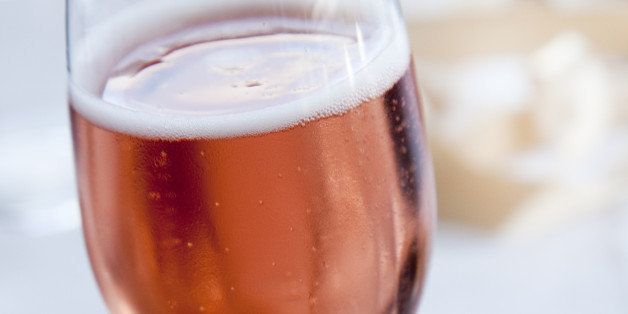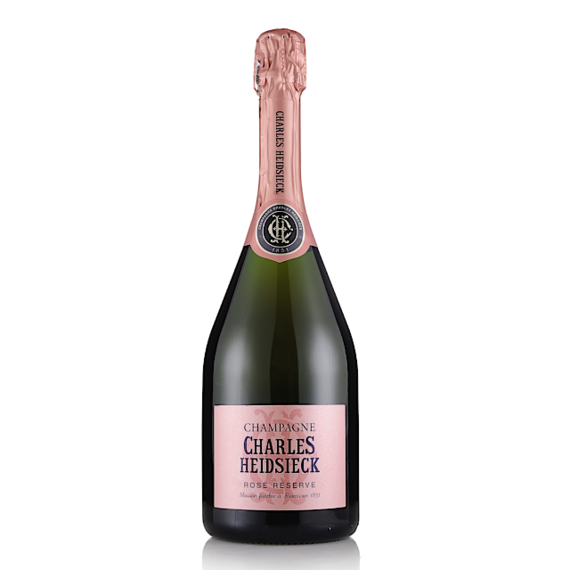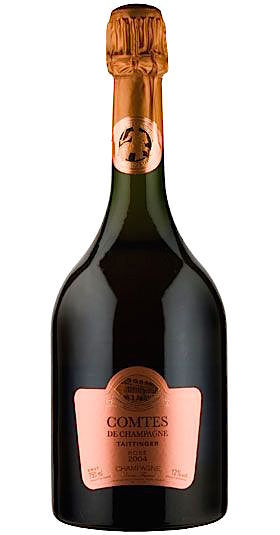
Far be it from me to perpetuate the idea that Champagne is only for holidays, business deals, weddings and World Series wins, but the December holidays are upon us and drinking a good Champagne seems almost requisite. And to my mind there is none better or more celebratory than rosé Champagnes, which once had a reputation for being "the pink stuff."
In a historic sense, rosé Champagne is something of an anomaly, for the goal of a Champagne maker is to produce as fine a white wine as possible, even when using black pinot noir grapes. Rosé wine, still or sparkling, can be made by macerating the red grapes at pressing to achieve color, and it's tricky business that can easily go wrong. Champagne is that rare appellation that allows rosés to be made by blending in red wine, and today 90 percent of the rosé Champagnes are made this way.
Despite rosés' perky image, the top Champagne producers have for some time now put the same diligent efforts into their rosés as into their blanc des blancs and prestige cuvées, and the astronomical prices can be about the same. But there are now so many superb rosés in the market selling for well under $100 a bottle that the idea of spending $200 and more for a vintage rosés seems a bit excessive these days.
Also, I find that so many of the top-of-the-line roses are deliberately made to be bone dry, which I think robs them of the component of fruit that is essential to any wine, sparkling or not. Thus, I found Nicolas Feuillatte Palmes d'Or Rosé Brut (the 2005 vintage runs about $150) more than austere, even a little soapy. Nicholas Feuillatte Brut Rosé non-vintage ($40), unlike the 2002, is a sleek, gorgeously constructed wine with perfume and ripeness. If this is a workhorse Champagne, it's from very fine stock indeed.
The two rosés that make me happiest, at any time of the year, are, first, Taittinger Comtes de Champagne Brut Rosé (2005 is $175), a favorite of James Bond in the Ian Fleming novels, both for its exquisite, silky color and its judicious balance of fruit and depth of pinot noir flavor, though I think it's getting drier every vintage; and second, but equally enticing, Charles Heidsieck Brut Rosé Reserve ($70), a non-vintage, with deep salmon-pink color married to floral, almost rose-like notes, with a good ballast of citrus in tandem with the fruit. It's got definite heft, owing to using 20 percent seven or eight year-old reserve wines in the final blend and maturing the wine for three years. I enjoyed it with a fish of coddled eggs and white truffles recently--a match made in culinary heaven for the holidays.
I will admit to being in thrall to Perrier-Jouët's 2004 Fleur de Champagne Brut Rosé, whose signature style has always been to balance fruit and citrus flavors with enormous finesse. Unfortunately, it sells for $200-$300 a bottle.
A much more palatable price for a very fine non-vintage Champagne is Drappier Brut Rosé ($60) made from 100 percent pinot noir, using the saignée ("bleeding") method, by which some of the red wine is macerated for three days to become more concentrated and ferments separately to produce this full-bodied rosé.
G.H. Mumm Cordon Rouge Brut Rosé non-vintage ($50-$65)--good old Mumm-sy, the Champagne you always see in movies being splashed about. Its former predictability has evolved into admirable consistency in a style that has depth and celebratory sparkle.
Bruno Paillard Rosé Brut Première Cuvée non-vintage ($60-$75)--The charm of this pretty rosé is in its adaptability to so many foods, from lobster to chicken, from smoked salmon to light desserts, and its high color is a joy in itself.
Henriot Brut Rosé non-vintage ($50-$60) -- If you expect fruit in a rosé, Henriot delivers gushers of it, which makes it a fine aperitif to kick off the evening and ideal with holiday sweets and cookies, even dark chocolate.
Louis Roederer 2009 Brut Rosé ($60) -- Absolutely luscious, downright creamy, for me is the very essence of a rosé Champagne.
Ayala Brut Rose Majeur non-vintage ($50) -- Since Bollinger bought this small estate in 2005, it has improved greatly with a style in direct contrast to Bollinger's staid, classic austerity. Ayala is a light-bodied Champagne that everyone should enjoy a glass or two of before dinner but perhaps not enough body for afterwards.

